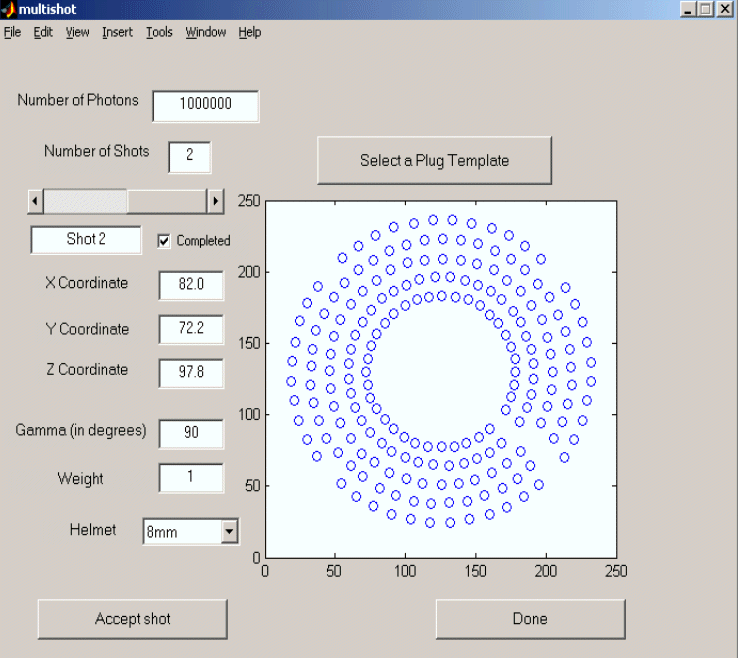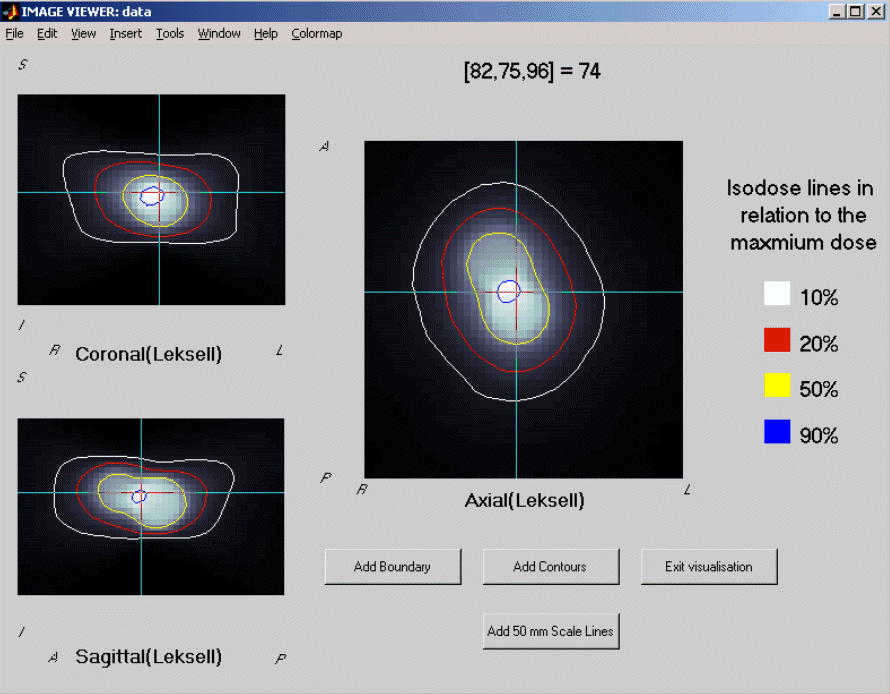The Grid-enabled radiosurgery application uses RAPT as a front end to the EGS Monte Carlo engine to model ionising radiation transport through the head of the patient. The simulation requires:
- Definition of patient geometry
- Specification and distribution of material types contained within the geometry
- Position of beam isocentre (i.e. beam focus)
- Beam properties - intensity profile, spectrum
- Beam distribution - number of beams and their arrangement
- Quality of simulation parameters - total number of photons, interaction types
- 3D patient mesh geometry
- Accumulated dose at each element of the solution mesh
- Flux variance at each element of the solution mesh
The results archive is pulled from the Grid in encrypted form and unzipped on the client within the working Output directory. This data is accessible to the user as a set of text files, but a visualization application has been provided to enable the user to explore the distribution of radiation dose within the treatment volume. The dose data can be represented as contours on specified planes through the volume mesh or visualised as isosurfaces in 3D. The job submission process is outlined in this figure.

Treatment set-up

Bubble head set-up

Computed dose contours